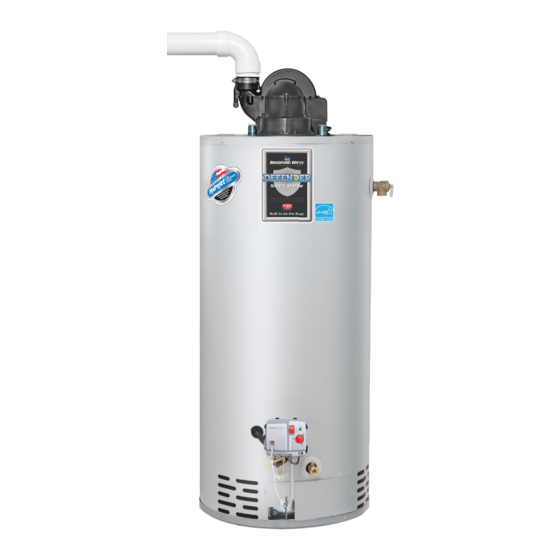
Advertisement
Table of Contents
- 1 Table of Contents
- 2 Introduction
- 3 Tools Required for Service
- 4 Control Timings
- 5 Pressure Switch Testing & Replacement
- 6 Blower Testing & Replacement
- 7 Blower Temperature Switch Testing & Replacement
- 8 Safety Circuit Voltage Trace
- 9 115 VAC Circuit Trace
- 10 Diptube Inspection & Replacement
- 11 Anode Inspection & Replacement
- 12 Flue Baffle Inspection & Replacement
- 13 Glossary of Terms
- Download this manual
Through-The-Wall (TTW
Gas Water Heaters - 19 Models
Manual 238-53838-00B REV 04/22
PV Series
SERVICE
MANUAL
and Instructions for Service
Models Covered
by This Manual:
RG1PV40S*(N,X)19
RG1PV50S*(N,X)19
RG1PV55H*(N,X)19
LG1PV55H*(N,X)19
RG2PV40S*(N,X)19
RG2PV50S*(N,X)19
* Denotes Warranty Year
)
®
Troubleshooting Guide
(To be performed ONLY by
qualified service providers)
RG2PV50H*(N,X)19
LG2PV50H*(N,X)19
RG2PV40T*(N,X)19
RG2PV50T*(N,X)19
RG2PV60T*(N,X)19
RG2PV75H*(N,X)19
LG2PV75H*(N,X)19
Save this manual for future reference
Advertisement
Table of Contents
















Need help?
Do you have a question about the RG1PV40SN19 and is the answer not in the manual?
Questions and answers